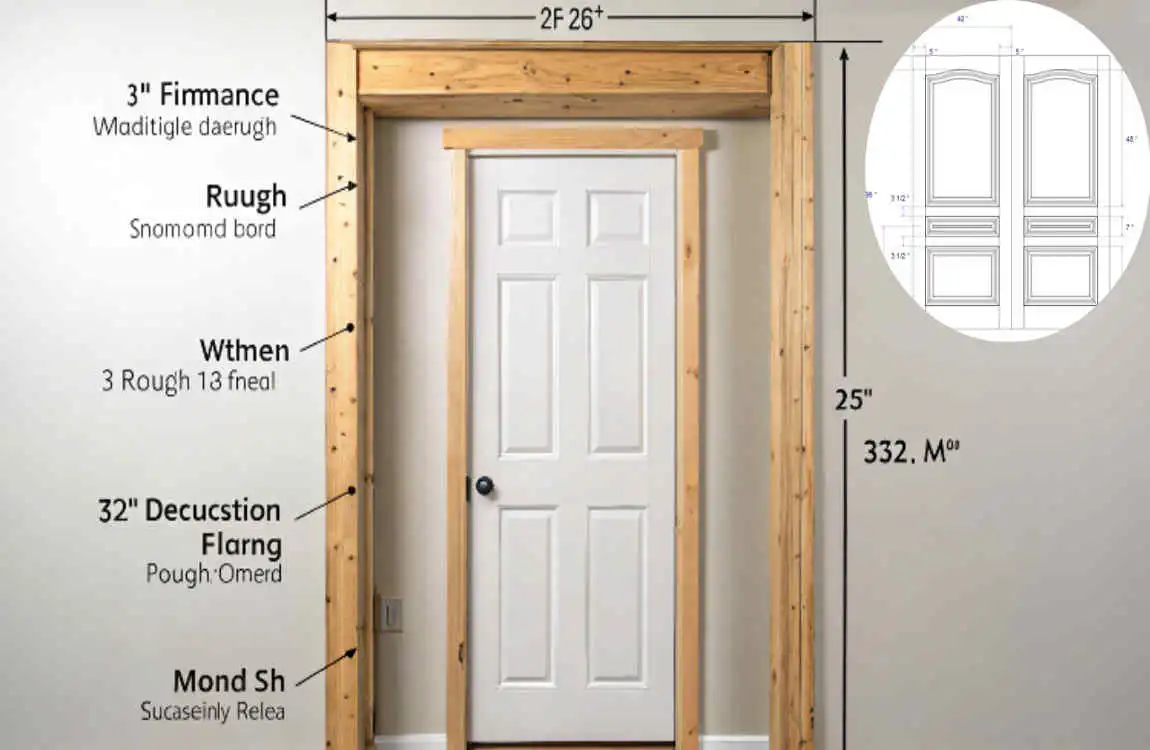Whether you’re a homeowner tackling a DIY project or a builder working on a new house door, understanding door rough openings is crucial. Knowing the rough opening for a 36-inch door can save you from costly mistakes, ensuring your door fits perfectly and functions smoothly.
What Is a Rough Opening?

A rough opening is the framed space in a wall where the door unit will be installed. Think of it as the “hole” that the door and its frame fit into before finishing touches, such as trim and casing, are added.
Why Is Rough Opening Important?
The rough opening is key to a successful door installation because it must be slightly larger than the door itself. This extra space allows for adjustments during installation, ensuring the door opens, closes, and seals properly. Without the correct rough opening size, you may encounter issues such as sticking doors, air leaks, or structural weaknesses.
Door Slab Size vs. Rough Opening Size
The door slab is the actual door panel—the part you see and use on a daily basis. The rough opening, however, includes the door frame plus a small gap around it for shims and insulation. So, the rough opening is always bigger than the door design.
Standard Dimensions for a 36-Inch Door
What Does a 36-Inch Door Slab Mean?
When we say a door is “36 inches,” we refer to the width of the door slab itself. This size is popular for exterior doors because it provides a wide and accessible entryway.
Common Types of 36-Inch Doors
- Interior hinged doors are usually lighter and thinner.
- Exterior hinged doors: Thicker with weather sealing.
- Sliding doors: Often larger but can have 36-inch panels.
- French doors: May be double 36-inch doors or single.
Each type can influence the framing needs slightly.
How Door Thickness and Frame Affect Rough Opening Size
Door slabs come in various thicknesses: typically 1 3/8 inches for interior and 1 3/4 inches for exterior doors. The door frame (jamb) adds more width and depth, so the rough opening must accommodate both. For example, a 36-inch door slab with a 4 9/16-inch jamb requires a wider rough opening than a thinner door with a slimmer frame.
What’s the Rough Opening for a 36-Inch Door?

The Direct Answer
For a standard 36-inch prehung door, the rough opening is usually 38 inches wide by 82 1/2 inches tall.
Why Is the Rough Opening Larger?
The rough opening is bigger to allow:
- Shimming: Small wedges used to level and plumb the door frame.
- Insulation: Space for weatherproofing materials.
- Adjustments: To ensure the door operates without rubbing or sticking.
Detailed Rough Opening Calculation
Step-by-Step Guide
- Start with the door slab width: 36 inches.
- Add twice the jamb width: Typically 4 9/16 inches per jamb, so about 9 1/8 inches total.
- Add space for shims: Usually 1/2 inch on each side (1 inch total).
- Total rough opening width: 36 + 9 1/8 + 1 ≈ 46 1/8 inches.
Height Calculation
- Door slab height: 80 inches (standard door height)
- Add head jamb thickness: ~5/8 inch
- Add shim space: 1/2 inch
- Add flooring allowance (if needed): varies
- Typical rough opening height: 82 1/2 inches
Building Code & Construction Standards
Why Codes Matter
Building codes, such as the International Residential Code (IRC), establish guidelines for door height openings to ensure safety, energy efficiency, and durability.
Key Code Points
- Minimum clear width for exterior doors (often 32 inches).
- Rough openings must accommodate proper insulation.
- Structural framing requirements prevent door sagging or warping.
Always check local codes, as they may include specific requirements that vary by location.
Factors That Affect Rough Opening Size
Door Frame Material
- Wood frames typically require standard rough openings.
- Metal frames may need slightly different rough opening sizes due to thickness.
Shim and Insulation Thickness
The thickness of shims and insulation can require adding extra clearance around the door feature.
Special Door Types
- Double doors: Require larger rough openings.
- French doors: Need precise framing for stability.
- Fire-rated doors: Have stricter size tolerances.
